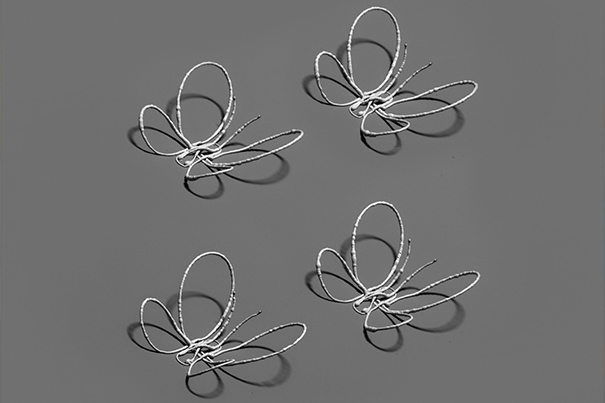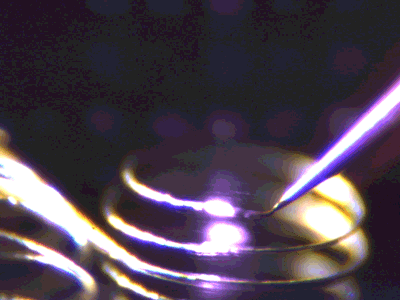
The growing demand for flexible, wearable electronics, sensors, antennas, and biomedical devices has inspired a team at Harvard’s Wyss Institute for Biologically Inspired Engineering and John A. Paulson School of Engineering and Applied Sciences (SEAS) to create a new method of printing complex metallic structures. This laser-assisted direct ink writing method allows microscopic metallic, free-standing 3D structures to be printed in one step without auxiliary support material.
Led by Wyss Core Faculty member and the Hansjorg Wyss Professor of Biologically Inspired Engineering at SEAS, Jennifer Lewis, Sc.D., the research team used an ink composed of silver nanoparticles in their experiments. The ink travels through a printing nozzle before scientists anneal it with a programmed laser that applies a precise amount of energy to solidify the ink. When combined with a rotary print stage to enable freeform curvature, the nozzle moves along x , y , and z -axes and produces hemispherical shapes, spiral motifs, and more in free space within seconds.
Compared to conventional 3D printing techniques that fabricate conductive metallic features, laser-assisted direct ink produces superior curvilinear complex wire patterns in one step. The concept of localized laser heating also enables electrically conductive silver wires to be printed directly on low-cost plastic substrates. What’s more, the research team also succeeded in overcoming technical challenges to optimize the nozzle-to-laser separation distance.

“If the laser gets too close to the nozzle during printing, heat is conducted upstream which clogs the nozzle with solidified ink,” said the study’s first author, Wyss Institute Postdoctoral Fellow Mark Skylar-Scott, Ph.D. “To address this, we devised a heat transfer model to account for temperature distribution along a given silver wire pattern, allowing us to modulate the printing speed and distance between the nozzle and laser to elegantly control the laser annealing process ‘on-the-fly.’”
With this detail fixed, the writing method can also produce sharp angular turns and directional changes into thin air, creating near infinite potential applications in electronic and biomedical devices. This advanced technology “not only inspires new kinds of products, it moves the frontier of solid free-form fabrication into an exciting new realm, demonstrating once again that previously accepted design limitations can be overcome by innovation,” said Wyss Institute Founding Director Donald Ingber, M.D., Ph.D.
Source: Wyss Institute and TechCrunch
Advertisement
Learn more about Electronic Products Magazine





